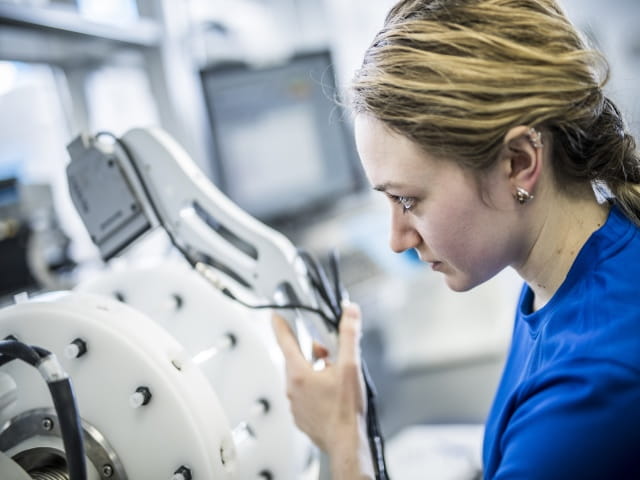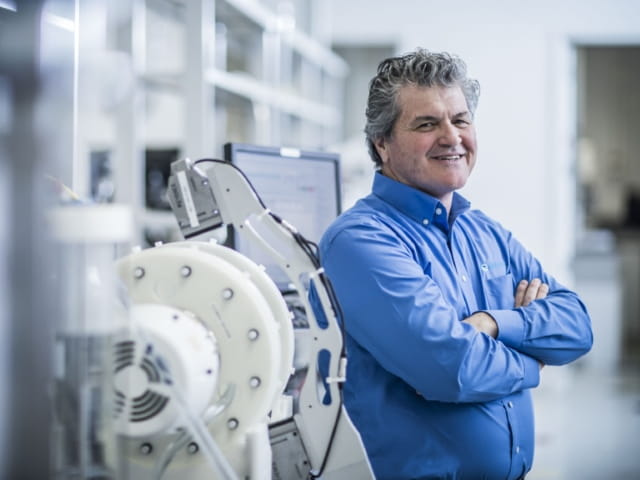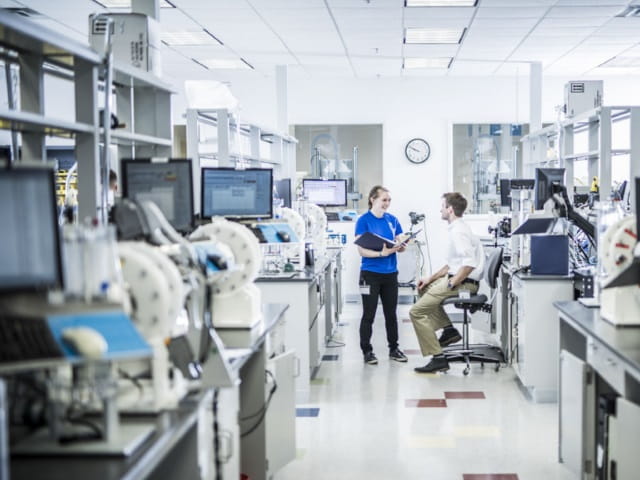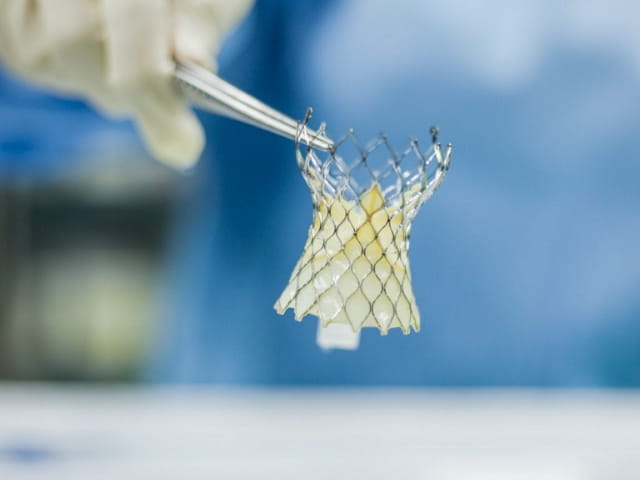Stroboscope Visual Inspection of Medical Devices
Digital stroboscopes greatly facilitate visual inspections of cardiovascular medical devices as they undergo accelerated fatigue. The strobe light is a very useful tool in detecting device failures and tracking motion during testing.
Accelerated fatigue is a common test method for many cardiovascular medical devices such as stents, heart valves, and stimulator leads. Industry standards for accelerated fatigue testing of cardiovascular devices include ASTM F2477, ISO 5840-3, and ISO 25539-1. During accelerated fatigue testing, samples are typically run for 400 or 600 million cycles to simulate 10 or 15 device lifecycle years.
Visual inspections during testing
Inspections are routinely performed as part of the test protocol at different phases including pre-, during, and post-test. Inspections performed during testing fall into two categories: on-tester and off-tester. Off-tester inspections involve pausing the test, removing a sample and examining it under a microscope before returning it to the tester. On-tester inspections are performed either while the test is running or after pausing the test while devices remain on the test system.
If the test is paused, visual inspections can be made with the aid of a backlight, handheld microscope, or an endoscope. However, it is sometimes difficult to detect failures and small fractures when the device is stationary. Two popular inspection methods used while a test is running are stroboscope and high-speed video. In this article, we will highlight the benefits of using a stroboscope for high-frequency, on-tester inspections.
How the stroboscope works
A stroboscope, also called a strobe light, stroboscopic lamp or strobe tachometer, is a device used to produce regular flashes of light. The flashes of light can stop or adjust the appearance of motion during testing, which allows users to inspect devices moving at high frequencies visually. When the frequency of the strobe light flash is adjusted to be in phase with test frequency, the subject will appear still. The more out of phase, the strobe light frequency is with the test frequency, the faster the motion will appear.
If the motion appears too slow or too fast, it can be hard to identify changes in the device and detect failures. Strobe light use is most effective when the frequency is adjusted so that the appearance of motion is approximately aligned with physiological frequencies, typically between 1 and 2 Hz. Turning off room lights reduces light interference and can further improve visibility. The FDA published a reference document guiding the use of stroboscopes for visual inspection.
Inspecting stents, heart valves and stimulator leads with strobe light
Our cardiovascular device testing lab commonly performs stroboscope visual inspections for the following tests and devices:
- S/N fatigue testing of stents and stent coupons
- Dynamic bend tests for stents and leads
- Large stent/graft testing
- Heart valve repair component testing
Many of these tests run at high frequencies, often in the 40 to 70 Hz range, and the strobe light is most useful for test frequencies above 30 Hz.
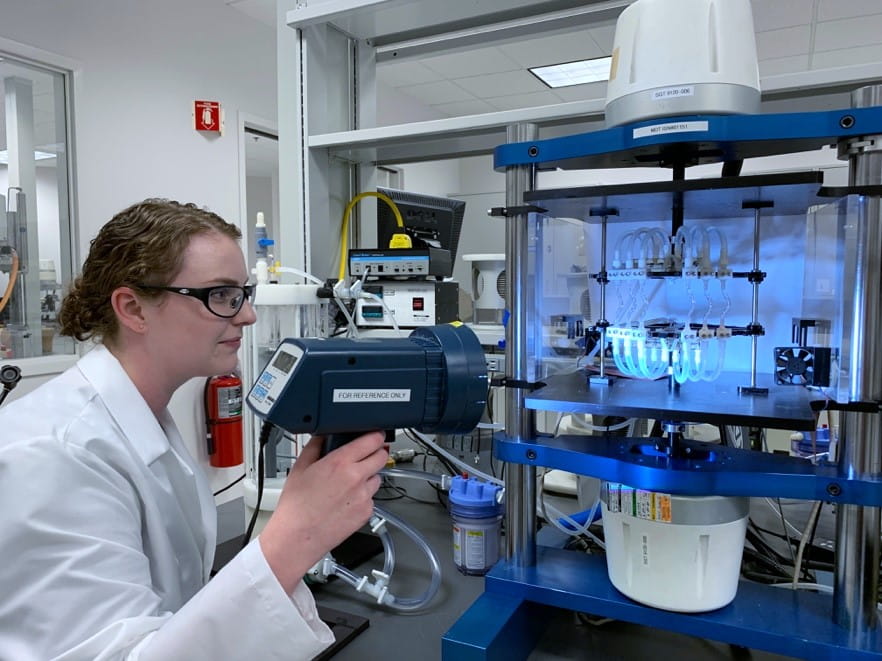
A strobe light is a relatively inexpensive tool used during accelerated fatigue testing to detect the following:
- Failures
- Fractures
- Stent migration and loss of apposition
- Fretting marks
- Loose crimps
- Fixture and device motion
Fractures create space in the device that can be more easily detected when the device is in motion; in fact, these fractures would take much longer to see when the system is stopped.
In addition to fractures and failures, strobe light inspections are often used for motion verification. Uniform device motion can be assessed and monitored over time to ensure that no undesirable motion is occurring. For example, during axial fatigue testing of a mitral valve tether, tether attachment to the commissure motion can be tracked and verified.
Changes in the test waveform shape or a reduction in load measurements may trigger a strobe light inspection to identify the source of the issue which could be device-, fixture- or instrument-related. Strobe light inspections require very minimal preparation and can easily be performed on a daily or weekly basis.
The Element Advantage
Our Engaged Experts excel at cardiovascular device testing and have worked with many challenging device designs and test setups over the last several decades. Contact us to discuss how we can help with your test project.
Element has one of the most expansive medical device testing scopes in the world, ranging from orthopedics and cardiovascular implants testing to EMC/EMI/product safety testing, and biological and packaging evaluations. We strive to meet all your medical device testing needs in the most expedient, efficient, and responsive way.
Find related Resources

